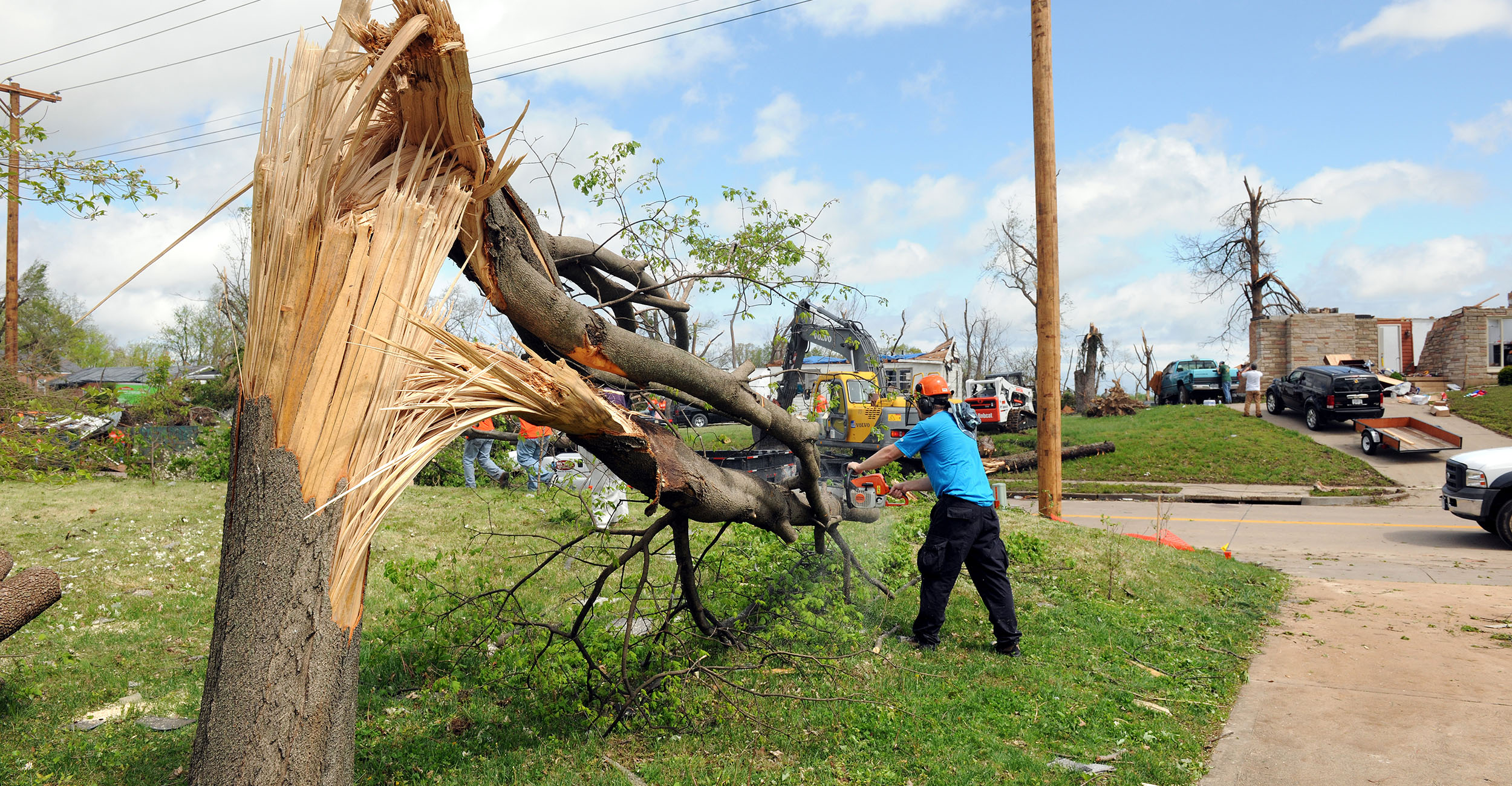
Chainsaw safety is vital during storm cleanup
Wednesday, March 22, 2023
Media Contact: Trisha Gedon | Sr. Communications Specialist | 405-744-3625 | trisha.gedon@okstate.edu
If there’s one thing Oklahomans know about, it’s the process of cleaning up after a storm. Some of that cleanup will require the use of a chainsaw for felled trees and other debris.
Ryan Desantis, Oklahoma State University Extension forestry specialist, said it’s important to keep chainsaw safety techniques in mind when cleaning up after a storm or doing any other type of chainsaw work.
There are several types of chainsaws on the market, including gas-powered, electric and battery-powered.
“No matter what type of saw a person is operating, safety is important. A battery-powered saw is just as powerful as a gas-powered saw,” Desantis said. “One of the biggest safety concerns when operating a saw is kickback. The operator should wear a helmet with a visor to help protect their head. Also, position your body in a way that if kickback occurs, the saw won’t hit your body.”
Kickback occurs when the rotating chain hits a solid object or the chain is pinched in a cut. This can force the saw backward, resulting in serious injury. To prevent kickback, keep the saw moving at a fast speed when entering or leaving a cut. Also, keep the chain properly sharpened.
Other safety operating tips include:
- Make sure the chain brake is on.
- Keep both hands on the saw.
- If using a gas-powered saw, start it on the ground.
The following protective clothing is encouraged:
- Chainsaw pants
- Long sleeves and gloves made from Kevlar, woven nylon or other similar material.
- Eye protection such as goggles or safety glasses with wrap-around lenses.
- Earplugs to muffle the loud engine noise.
- Steel-toed boots
“In storm-damaged areas, there likely will be debris on the ground, which can be a tripping hazard,” Desantis said. “Considering the tripping hazard, it is important to keep the chain brake on whenever not actively cutting, especially when moving amongst debris.”
For more in-depth information, OSU Extension provides safe chainsaw operations guidance online, as well as a wide range of other helpful storm damage response tips.
